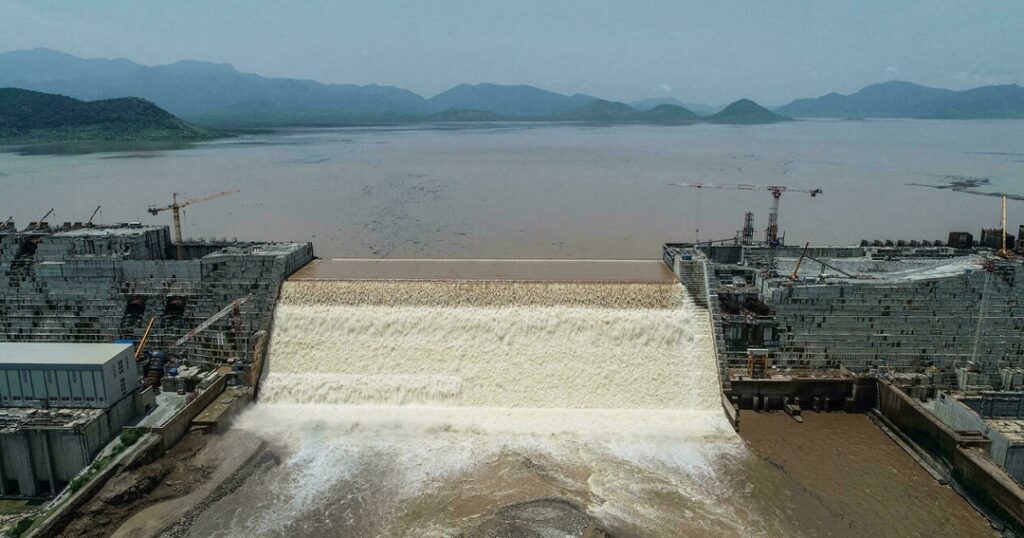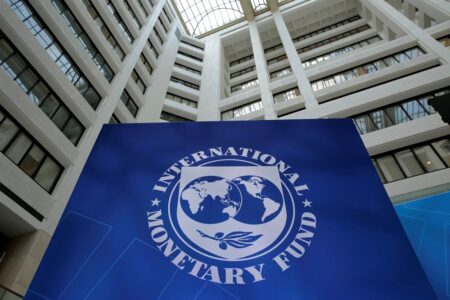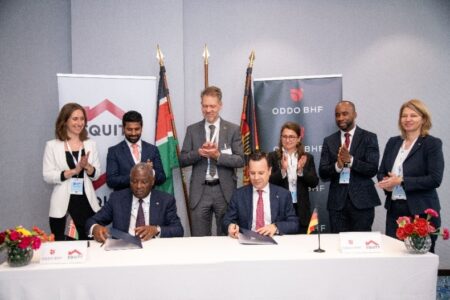- With its vast rivers and elevated terrains, Ethiopia is one of Africa’s most hydropower-rich nations.
- According to the International Hydropower Association, Ethiopia’s untapped rivers could generate up to 45,000 MW of electricity.
- However, While Ethiopia could evolve into a regional ticket to energy independence, some nations like Egypt and Sudan have expressed concerns over water access and environmental impact.
Ethiopia has long harboured dreams of becoming a renewable energy powerhouse. With its vast rivers and elevated terrains, it is one of Africa’s most hydropower-rich nations.
And as global pressure mounts to curb fossil fuel dependency, the country’s hydropower ambitions offer a glimpse into a future where East Africa’s energy needs could be sustainably met.
With expanding projects such as the Grand Ethiopian Renaissance Dam (GERD) and various regional power-sharing agreements underway, Ethiopia is moving beyond its borders, positioning itself as a critical player in East Africa’s renewable energy push.
The Renewable Energy Puzzle in East Africa
Across East Africa, countries such as Kenya, Uganda, and Tanzania are grappling with balancing economic growth with environmental sustainability. With energy demands projected to skyrocket as populations and industries expand, the region urgently needs reliable, affordable, and sustainable power sources.
Fossil fuels remain part of the mix, but their environmental toll is clear, and many East African nations have set ambitious renewable energy targets. Ethiopia’s hydropower projects, with their vast output potential, could become a compelling answer to these challenges.
Ethiopia’s hydropower potential isn’t just an ambitious vision— it’s a necessity. According to the International Hydropower Association, Ethiopia’s untapped rivers could generate up to 45,000 MW of electricity.
This immense capacity, if harnessed and distributed efficiently, could meet not only domestic demand but also supply electricity to neighbouring countries struggling with frequent power outages. In this context, Ethiopia’s hydropower push is more than an energy initiative; it’s a regional lifeline.
The Grand Ethiopian Renaissance Dam (GERD)
No discussion of Ethiopia’s hydropower journey would be complete without delving into the Grand Ethiopian Renaissance Dam (GERD). Set on the Blue Nile River and touted as Africa’s largest hydroelectric project, GERD has become a symbol of Ethiopia’s renewable energy ambition.
Initially launched in 2011, GERD is expected to generate around 6,450 MW of electricity—roughly doubling Ethiopia’s current power generation capacity.
Both celebration and fierce contention have marked the dam’s construction. While Ethiopians view it as a source of national pride and a ticket to energy independence, downstream nations, particularly Egypt and Sudan, have expressed concerns over water access and environmental impact.
However, for East Africa’s energy map, GERD represents a renewable energy goldmine. Once fully operational, the dam could export electricity to surrounding countries, fostering economic ties while promoting a clean energy agenda in the region.
The potential for export revenue cannot be overlooked either. Ethiopia’s power utility, the Ethiopian Electric Power (EEP), has signed several agreements to sell electricity to Kenya, Djibouti, and Sudan.
These deals are not just about earning foreign currency but about embedding Ethiopia’s hydropower in the broader East African economy. It’s a win-win scenario, as importing countries gain access to affordable energy while Ethiopia reinforces its role as an energy hub.
Tapping other hydropower projects: Beyond the GERD
While GERD garners the most attention, Ethiopia’s hydropower ambitions extend to several other projects that aim to diversify and amplify its energy output.
Notable examples include the Gilgel Gibe III Dam, which began operations in 2015 with a capacity of 1,870 MW, and the Koysha Hydroelectric Project, which is expected to add 2,160 MW.
These projects reflect a strategic approach to maximizing Ethiopia’s river systems to create a renewable energy ecosystem that goes beyond a single megaproject.
The Gibe River, for instance, has been a particular focus, with the Gibe I and II dams also contributing to Ethiopia’s national grid. By harnessing this river system, Ethiopia is building a layered infrastructure of hydropower sources that can ensure stability even during periods of fluctuating rainfall.
Additionally, smaller projects such as the Tekeze and Beles dams demonstrate a more localized approach to hydropower, supplying energy to rural areas and supporting off-grid electrification.
Through these distributed projects, Ethiopia is creating a mosaic of energy sources that strengthen its national grid while positioning it as a renewable energy leader in East Africa.
Read also: Ethiopia’s forest revolution brings carbon finance billions within reach
Power-sharing agreements: A strategy for regional impact
Ethiopia’s hydropower potential is poised to reshape East Africa’s energy landscape not only because of its capacity but because of its approach to regional collaboration.
In recent years, the Ethiopian government has signed several power-sharing agreements that mark a significant shift toward regional energy integration.
Agreements with Kenya, Sudan, and Djibouti have led to the construction of cross-border transmission lines, some of which are already operational, linking Ethiopia’s energy grid with neighboring countries.
For instance, a high-voltage line running between Ethiopia and Kenya was completed in 2019, forming part of the Eastern Africa Power Pool (EAPP) initiative. This grid-sharing project aims to interconnect the electricity networks of East African countries, facilitating cross-border power sales and allowing for efficient distribution.
If Ethiopia produces a surplus, Kenya and other EAPP members can purchase it, helping to alleviate power shortages and ensure a steady supply for growing urban and rural areas.
These agreements go beyond mere transactions. They represent a regional energy strategy that recognizes the interconnectedness of East African nations.
By pooling resources and sharing energy, countries in the region can cut costs, improve energy reliability, and reduce dependency on nonrenewable sources. Ethiopia’s hydropower might be the spark that lights up this vision, turning East Africa into a renewable energy network rather than a collection of isolated grids.
Challenges and prospects: The road to regional leadership
While Ethiopia’s hydropower potential is impressive, the journey isn’t without obstacles. Climate change poses a significant risk, as the East African region has witnessed unpredictable weather patterns that could affect river flow and hydropower reliability.
Droughts or extended dry seasons, for instance, could reduce water levels, hampering electricity generation and leaving both Ethiopia and its power-importing neighbors vulnerable.
Additionally, political and economic stability are essential for maintaining and expanding hydropower infrastructure. The GERD, for example, has sparked diplomatic tensions with Egypt and Sudan, and future projects could face similar challenges. Ensuring these projects have both regional support and environmental safeguards is crucial to sustaining Ethiopia’s role as a hydropower leader.
Yet, despite these hurdles, Ethiopia’s vision remains bold and unwavering. The Ethiopian government has identified renewable energy, particularly hydropower, as a cornerstone of its economic policy, with ambitious plans to achieve universal electricity access by 2030.
For East Africa as a whole, Ethiopia’s hydropower projects offer a template for what renewable energy can look like on a continental scale — a shift away from fossil fuels toward a cleaner, interconnected grid that benefits everyone.
Hydropower and regional resilience: Lessons for a sustainable future
Ethiopia’s hydropower journey provides valuable insights for other nations seeking sustainable energy solutions. By investing in renewable energy and embracing cross-border collaboration, Ethiopia is not only powering its own growth but also contributing to regional resilience.
In a world where the effects of climate change and fossil fuel depletion are increasingly felt, East Africa’s embrace of hydropower marks a critical step toward long-term stability.
The road ahead may be challenging, but Ethiopia’s hydropower potential highlights what’s possible when countries invest in their natural resources for the collective good. As new dams are constructed and more energy flows across borders, East Africa could emerge as a model for sustainable development, guided by Ethiopia’s renewable energy vision.
This is more than a quest for power; it’s a commitment to a future where the lights in East Africa stay on, powered by rivers that have flowed through the region for millennia.
In the end, Ethiopia’s hydropower potential may not just illuminate homes and businesses but could light the way for a greener, more resilient East Africa. As the turbines of GERD and other projects hum to life, they carry with them the promise of a new era for energy in East Africa—one that is clean, reliable, and shared among nations.
Read also: Water wars: Ethiopia-Egypt clash as critical GERD talks hit an impasse











